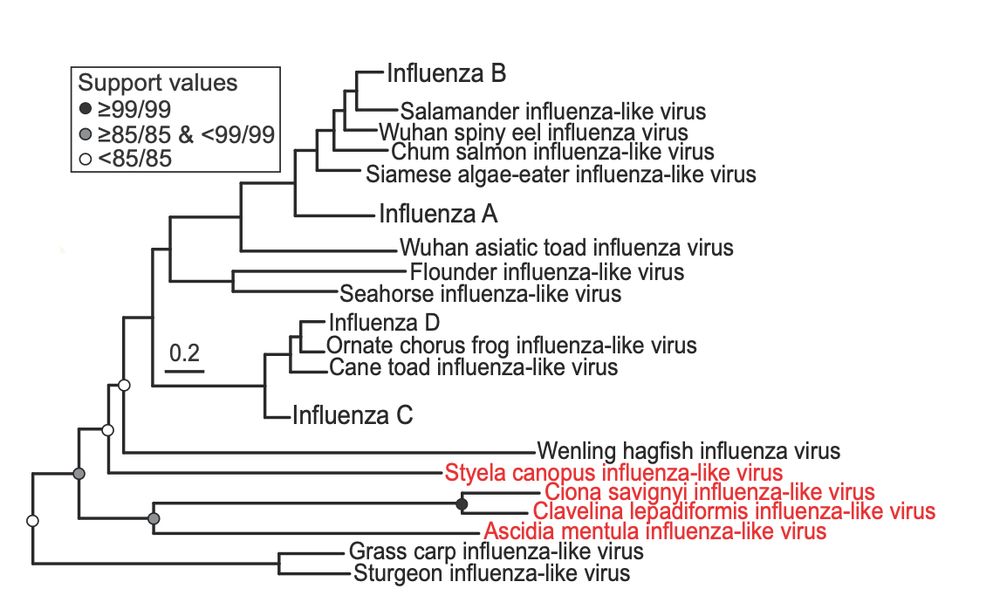#1 fan of weird marine invertebrate RNA viruses
They teach us about the ancient evolutionary history of our own viruses through virus-host co-divergence and demonstrate the role that recombination has played throughout that history.
They teach us about the ancient evolutionary history of our own viruses through virus-host co-divergence and demonstrate the role that recombination has played throughout that history.


I have unofficially named this (maybe) new family the Patchyviridae after Patchy the Pirate from Spongebob. Thanks to my cousin David for that one.

I have unofficially named this (maybe) new family the Patchyviridae after Patchy the Pirate from Spongebob. Thanks to my cousin David for that one.

We found multiple instances of influenza-like viruses in tunicate metatranscriptomes (shown in red) that fell towards the base of the clade. Here is the phylogeny for PB1, but the pattern held up for the other segments, too.

We found multiple instances of influenza-like viruses in tunicate metatranscriptomes (shown in red) that fell towards the base of the clade. Here is the phylogeny for PB1, but the pattern held up for the other segments, too.
And so we asked: Can we find relatives of vertebrate-infecting viruses in tunicate metatranscriptomes? That is, could the history of some vertebrate-infecting lineages actually date back to basal (invertebrate) chordates?
And so we asked: Can we find relatives of vertebrate-infecting viruses in tunicate metatranscriptomes? That is, could the history of some vertebrate-infecting lineages actually date back to basal (invertebrate) chordates?


